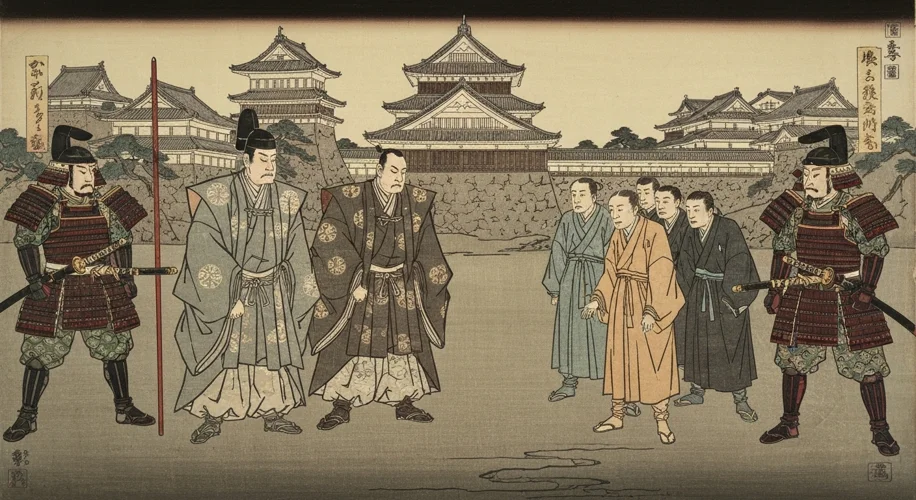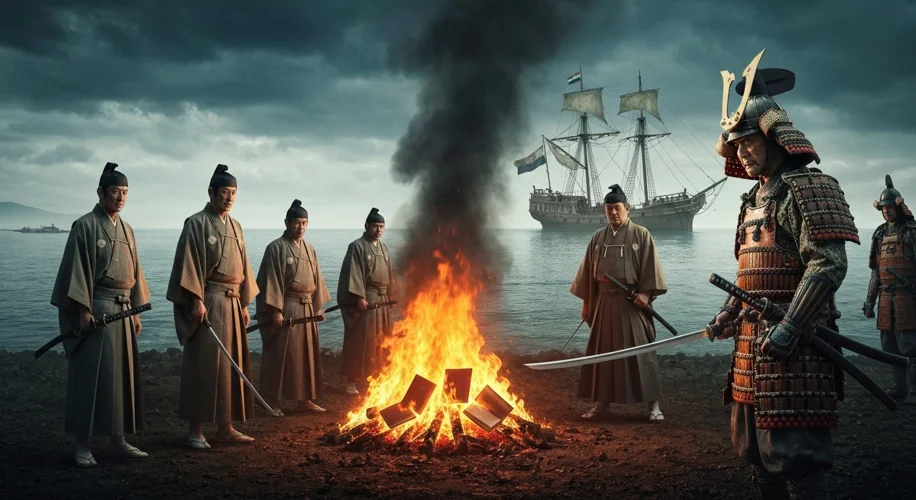In the annals of Japanese history, few periods evoke as stark an image of isolation and spiritual upheaval as the era of Sakoku, roughly translated as “chained country” or “closed country.” For over two centuries, from the 1630s until the mid-19th century, Japan, under the stringent rule of the Tokugawa shogunate, turned its back on the outside world. This was not merely a political decision; it was a deeply ingrained policy shaped by fear, control, and a profound desire to preserve the established social order. At the heart of this isolation lay a deep-seated suspicion of foreign influence, most notably embodied by the burgeoning Christian faith.
The seeds of Sakoku were sown in the tumultuous Sengoku period (Warring States period), a time when Japan was fractured by internal conflict. The arrival of Portuguese traders in the mid-16th century brought with it not only new technologies and trade goods but also Jesuit missionaries. Figures like Francis Xavier, who arrived in 1549, made significant inroads, converting thousands and establishing a Christian presence. By the early 17th century, Christianity had gained a considerable following, particularly in the southern island of Kyushu. However, this growing influence was viewed with alarm by the Tokugawa shogunate, which had only recently unified the country under its iron fist.
The shogunate, led by figures like Tokugawa Ieyasu and his successors, saw Christianity as a direct threat to their authority. They observed how Christianity’s monotheistic doctrine and its followers’ allegiance to a foreign religious leader (the Pope) undermined the traditional social hierarchy and the emperor’s symbolic authority, which was deeply intertwined with Shinto and Buddhist beliefs. Furthermore, the shogunate feared that the Christian powers of Europe, like Spain and Portugal, might use religious conversion as a pretext for political and economic domination, much like what was happening in parts of Asia and the Americas.
The pivotal moment arrived in the 1630s. The Shimabara Rebellion of 1637-1638, a peasant uprising largely composed of Christian ronin (masterless samurai) and farmers protesting against oppressive taxation and religious persecution, served as the final catalyst. While the shogunate brutally suppressed the rebellion, the event solidified their resolve to eradicate Christianity and prevent any future foreign interference. This led to the promulgation of the Sakoku Edicts, a series of decrees that systematically severed Japan’s ties with the rest of the world.

The edicts were far-reaching and severe. Foreigners, with very few exceptions, were expelled. Portuguese and Spanish ships were banned entirely. Japanese citizens were forbidden from leaving the country on pain of death. Trade was severely restricted, limited to the Dutch and Chinese, who were confined to the artificial island of Dejima in Nagasaki Harbor. The Dutch, in particular, were required to provide regular reports on world affairs, yet their own activities were meticulously monitored. The shogunate also implemented a rigorous system of fumie, or “stepping on images,” where suspected Christians were forced to tread on Christian icons to prove their apostasy.
Christianity itself was driven underground. Churches were destroyed, and thousands of Japanese Christians were arrested, tortured, and executed. The practice of Christianity became a clandestine affair, carried out in secret meetings and hidden symbols. Families were torn apart, and a climate of fear and suspicion permeated society. This period is marked by harrowing tales of martyrdom, with individuals like Paul Miki and his companions, crucified in Nagasaki in 1597, becoming enduring symbols of Christian resilience in Japan.
The impact of Sakoku was profound and multifaceted. On one hand, it fostered a unique and highly sophisticated Japanese culture, allowing arts, crafts, and philosophy to develop in relative isolation. Kabuki theater, ukiyo-e woodblock printing, and the refinement of tea ceremony all flourished during this period. It also maintained a long period of internal peace and stability after centuries of warfare. On the other hand, Japan was cut off from the scientific and technological advancements sweeping through Europe and the rest of the world. This technological gap would become glaringly apparent when Commodore Matthew Perry’s Black Ships arrived in 1853, forcing Japan to reopen.
The exclusion of Christianity was a central pillar of Sakoku. It demonstrated the Tokugawa shogunate’s supreme concern for political control and the preservation of its rigid social structure. The decision to ban Christianity was not just about religious intolerance; it was a strategic move to neutralize a perceived threat to national unity and sovereignty. The legacy of Sakoku, including the deep-seated suspicion of foreign influence and the enduring scars of Christian persecution, continued to shape Japan’s identity and its engagement with the global community long after the nation reopened its doors.

